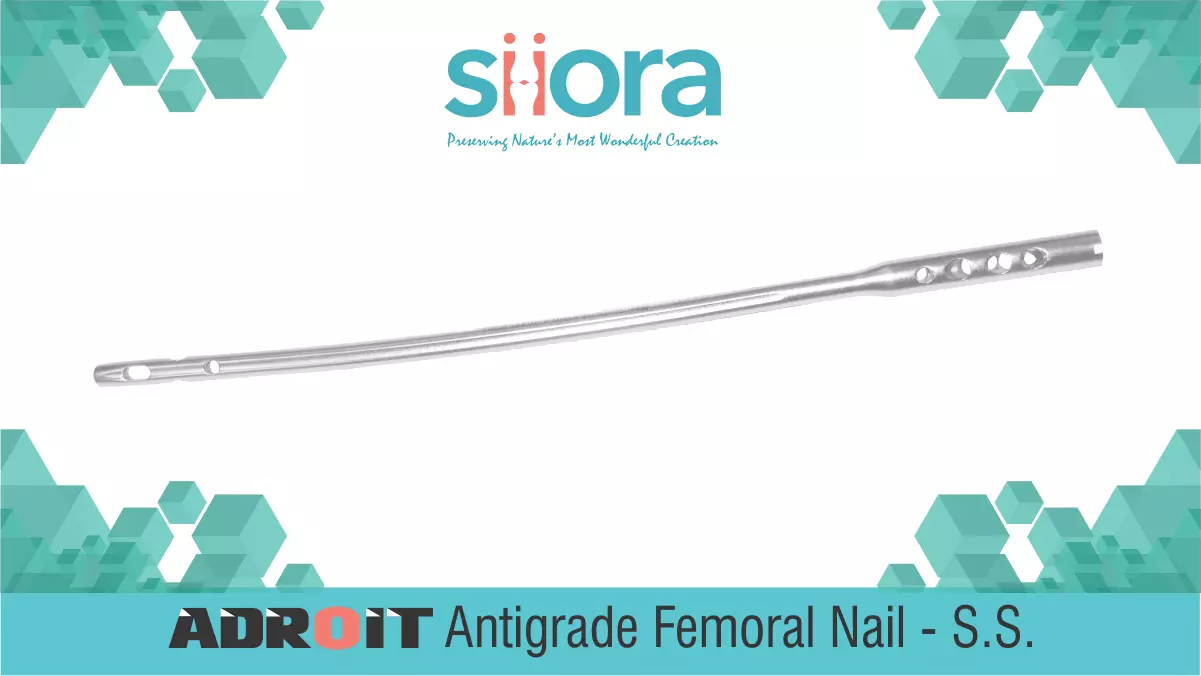In nailing without reaming, implants of smaller diameter are used to insert the Intramedullary interlocking nail. Its positive point is that it produces less heat and less disturbance to the blood supply of Endosteal. The risk of bone necrosis is also significantly less in the post-operative infection. However, the thinner implants used in insertion disturb the supply of blood but to a certain degree.
The recent studies have been conducted on animals to know the susceptibility to experimentally induced infection. Both solid and tubular nails are compared in an animal model and according to the statistically notable findings of the Experiments, the higher Susceptibility to infection has been found in the case of tubular nails as compared to solid nails. The major cause of this difference is probably the dead space inside the tubular nail.
The effect of the mechanical parameter and diameter of the nail on blood transfusion was also researched in the dog model. When Segmental Osteotomy of the tibia was followed, it was found that a loose-fitting tibia femur nail has a lesser effect on cortical perfusion as compared to a tight-fitting tibia femur nail.
And eleven weeks after nailing, it allowed almost complete cortical revascularization. However, the value of the load at the failure point and the stiffness both were found the same.
Read Also: What is Alzheimer’s disease?
Hence, the above-mentioned findings have implications for the treatment of tibia shaft fractures particularly with a critical soft-tissue injury where the supply of blood must be compromised knowingly.
Selection of nail length before the operation
Generally, for the pre-operative planning of intramedullary nailing, templates are suggested. Although the precision of templates largely depends on the magnification of x-ray. The range of magnification is 10-20% only. However, currently, there is no acknowledged criterion for large bones.
According to the analysis of the latest study done on 200 x-rays (selected at random) of intramedullary nailing of tibia and femur fracture stabilization, the mean magnification factor in the tibia is 1.07 and in the femur is 1.09.
Therefore, It was concluded that the selection of implant should be based on the x-ray of the intact contralateral bone or measurements based on image intensifier or intra-operative clinical. Because for selecting the correct length of the nail, the templates which are presently in use, are not reliable.
The positioning of The Patient
The substitutes for positioning of the patient for femoral nailing are the fracture table or a standard radiolucent operating table. It can be used with or without the femoral distractor. The use of the fracture table may help place the reamed nails because it keeps up a specified reduction all the time in the procedure.
Although the process takes time and setting of fracture table may put neuro-vascular structure and skin at risk but the latest studies regarding the positioning of the patient show that as compared to distractor, operation, and anesthesia takes lesser time if fracture table is not used.
Moreover, for the stabilization of semi-parallel fractures and multiple fractures, it allows specific positioning and draping procedure. The use of a femoral distractor or a fracture table does not only depend on individual choice or one’s own experience but also the situation.
There is a requirement of preservation of each passage of the reamer and the nail in fracture reduction in case of reamed nailing. But maintenance of accurate reduction is required for the short while to pass the nail from the proximal fragment into the main distal fragment.
On a regular fracture table, patients with multiple injuries (bilateral/ ipsilateral tibial or femoral fractures) can be treated. As there is no requirement of changing the position neither of the patients nor the drapes. This procedure is not time-consuming and this has low-risk.
In this procedure, the injured leg is supported by a simple frame of external fixator or by one devised from the external tubular fixator and four tube to tube clamps.











